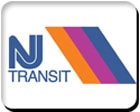 WASHINGTON – The U.S. Department of Transportation’s Federal Railroad Administration April 9 announced its intention to issue a proposed rule requiring two-person train crews on crude oil trains and establishing minimum crew size standards for most main line freight and passenger rail operations. The FRA also intends to advance a rulemaking on train securement and recommends a rulemaking on the movement of hazardous materials.
WASHINGTON – The U.S. Department of Transportation’s Federal Railroad Administration April 9 announced its intention to issue a proposed rule requiring two-person train crews on crude oil trains and establishing minimum crew size standards for most main line freight and passenger rail operations. The FRA also intends to advance a rulemaking on train securement and recommends a rulemaking on the movement of hazardous materials.
“Safety is our highest priority, and we are committed to taking the necessary steps to assure the safety of those who work for railroads and shippers, and the residents and communities along shipping routes,” said U.S. Transportation Secretary Anthony Foxx. “The proposed rulemaking on crew size is the latest effort in our comprehensive strategy to ensure crude oil is transported as safely as possible.”
The announcement follows the deliberations of three Railroad Safety Advisory Committee (RSAC) Working Groups on Appropriate Train Crew Size, Securement and Hazardous Materials Issues. All three working groups were created at DOT’s request last summer in response to the Lac-Mégantic derailment. The emergency meeting was held to evaluate and consider wide-ranging proposals to further enhance railroad safety including the safe shipment of crude oil by rail. Two of the working groups produced recommendations that were adopted by the full RSAC for consideration in future rulemakings. In light of the working group’s failure to reach consensus on crew size, the FRA took action today to move forward with a rule-making.
“We believe that safety is enhanced with the use of a multiple person crew – safety dictates that you never allow a single point of failure,” FRA Administrator Joseph C. Szabo said. “Ensuring that trains are adequately staffed for the type of service operated is critically important to ensure safety redundancy. We commend the RSAC’s efforts and will use the valuable input received to formulate a proposed rule that protects the public and recognizes the nuance of railroad operations.”
“The FRA’s RSAC process confirmed that rail operational safety is enhanced with the use of a multiple-person crew,” said SMART Transportation Division President John Previsich. “Both the conductor and locomotive engineer are certified and licensed under federal regulations and work cooperatively as a team. During this working group process, the committee also confirmed that there are many required tasks that are performed by our train crews each day in normal operations that a single crew member cannot perform by themselves.
“It takes two skilled and qualified employees to perform a normal brake test, to separate a train at a highway-rail crossing, to receive and acknowledge mandatory directives while moving, to make routine pick up and set out of cars from the train, and also to act as a first responder for indicated defects in equipment, derailments, unexpected application of brakes, and highway-rail crossing collisions.”
While existing FRA regulations do not mandate minimum crew staffing requirements, current industry practice is to have two-person crews for over-the-road operations. The notice of proposed rulemaking (NPRM) will most likely require a minimum of two-person crews for most mainline train operations, including those trains carrying crude oil. It is also expected to include appropriate exceptions.
“Safety is good business in the rail industry. We are very disappointed that the Association of American Railroads and some short line railroads continue to keep their head in the sand when confronted with critical safety concerns. AAR continues to ignore the preventable accident that occurred less than 20 miles north of our border,” Previsich added.
FRA plans to issue an additional NPRM based on the consensus recommendations of the Securement Working Group and approved by the full RSAC that would prohibit certain unattended freight trains or standing freight cars on main track or sidings and require railroads to adopt and implement procedures to verify securement of trains and unattended equipment for emergency responders. It would also require locomotive cabs to be locked and reversers to be removed and secured. Railroads would also be required to obtain advance approval from FRA for locations or circumstances where unattended cars or equipment may be left.
The full RSAC also approved four recommendations of the Hazardous Materials Issues Working Group relating to identification, classification, operational control and handling of certain shipments. The four recommendations, directed to the Pipeline and Hazardous Materials Safety Administration (PHMSA), include amending or revising the definitions of “residue” and “key train,” and clarifying its regulatory jurisdiction over the loading, unloading and storage of hazmat before and during transportation. PHMSA continues to advance a rulemaking addressing the integrity of DOT Specification 111 tanker cars and the safe shipment by rail of flammable materials such as crude oil.
On Aug. 29, 2013, the first-ever emergency session of the RSAC was held in response to the July 6, 2013, derailment of an unattended Montreal, Maine & Atlantic Railway freight train containing crude oil in Lac-Mégantic, Quebec, Canada. Building upon Foxx’s February agreement with the rail and petroleum industries, the FRA’s Emergency Order 28 and Safety Advisory 2013-06, PHMSA’s Operation Safe Delivery, Safety Alerts and a DOT Emergency Order, the three RSAC working groups reviewed existing regulations and standards to identify and mitigate the risks posed by such shipments and prevent future accidents.
“The unfortunate tragedy in Lac-Mégantic highlighted the need for sanity in intercity rail operations,” said SMART Transportation Division National Legislative Director James Stem. “Operating a long freight train through the communities that our industry serves with only one person on a crew is not only unsafe, but is also unsustainable.
“The safety improvements in our industry are directly linked to the training and certification of the two professionals on the locomotives and the other professional employees and their managers that are operating, repairing and maintaining our rail network throughout the United States. Our rail industry today is enjoying record profits, record productivity, and every stock broker is recommending a ‘buy’ on all railroad stocks. There is no argument that the current regulatory scheme in place today is a critical component of that productivity, and thus the high level of profitability.”
 WASHINGTON – U.S. Transportation Secretary Anthony Foxx on Wednesday asked oil-by-rail leaders to create a tank car fit to carry the kinds of fuel involved in recent fiery derailments even as he dodged lawmaker questions about when such a plan would be ready.
WASHINGTON – U.S. Transportation Secretary Anthony Foxx on Wednesday asked oil-by-rail leaders to create a tank car fit to carry the kinds of fuel involved in recent fiery derailments even as he dodged lawmaker questions about when such a plan would be ready. WASHINGTON – The U.S. Department of Transportation’s Federal Railroad Administration April 9 announced its intention to issue a proposed rule requiring two-person train crews on crude oil trains and establishing minimum crew size standards for most main line freight and passenger rail operations. The FRA also intends to advance a rulemaking on train securement and recommends a rulemaking on the movement of hazardous materials.
WASHINGTON – The U.S. Department of Transportation’s Federal Railroad Administration April 9 announced its intention to issue a proposed rule requiring two-person train crews on crude oil trains and establishing minimum crew size standards for most main line freight and passenger rail operations. The FRA also intends to advance a rulemaking on train securement and recommends a rulemaking on the movement of hazardous materials. A new report, “The Northeast Corridor and the American Economy,” produced by the Northeast Corridor Infrastructure and Operations Advisory Commission (NEC Commission) details how the Northeast Corridor (NEC), carrying 750,000 daily Amtrak and commuter/regional rail passengers, “is a critical national asset, an economic engine for the U.S., and contributes about $50 billion a year to the national economy.”
A new report, “The Northeast Corridor and the American Economy,” produced by the Northeast Corridor Infrastructure and Operations Advisory Commission (NEC Commission) details how the Northeast Corridor (NEC), carrying 750,000 daily Amtrak and commuter/regional rail passengers, “is a critical national asset, an economic engine for the U.S., and contributes about $50 billion a year to the national economy.” Conductors assaulted on trains. Employee facilities that are filthy and infested with rodents. A culture where “an on-time train is better than a safe train.”
Conductors assaulted on trains. Employee facilities that are filthy and infested with rodents. A culture where “an on-time train is better than a safe train.” From the towns of Lamar and La Junta on the Eastern Plains, south to Trinidad, the Southwest Chief has made stops since 1971 as it shuttles passengers between Chicago and Los Angeles.
From the towns of Lamar and La Junta on the Eastern Plains, south to Trinidad, the Southwest Chief has made stops since 1971 as it shuttles passengers between Chicago and Los Angeles.